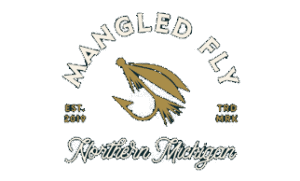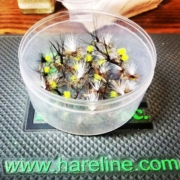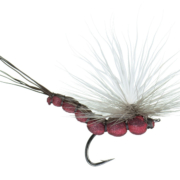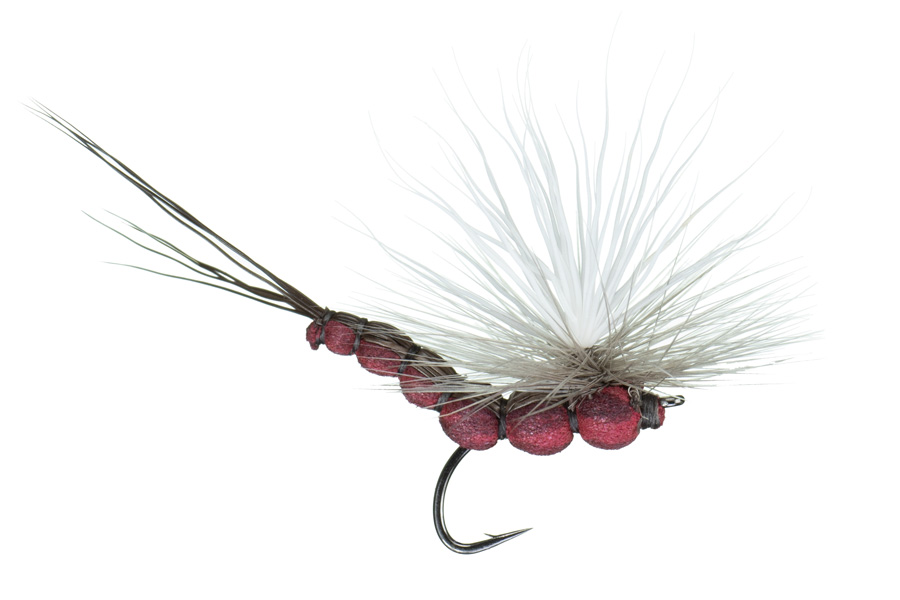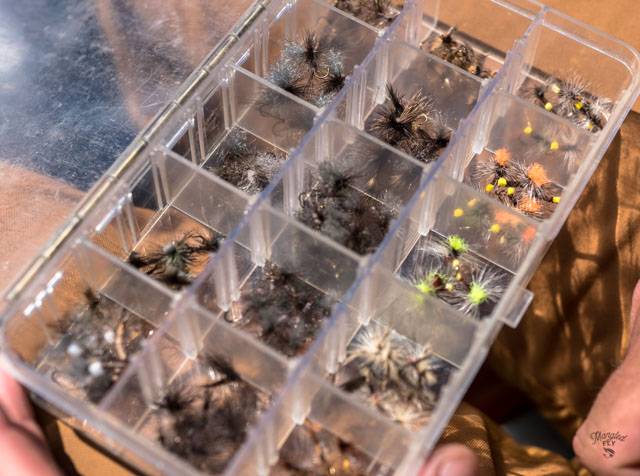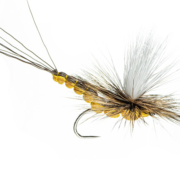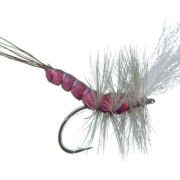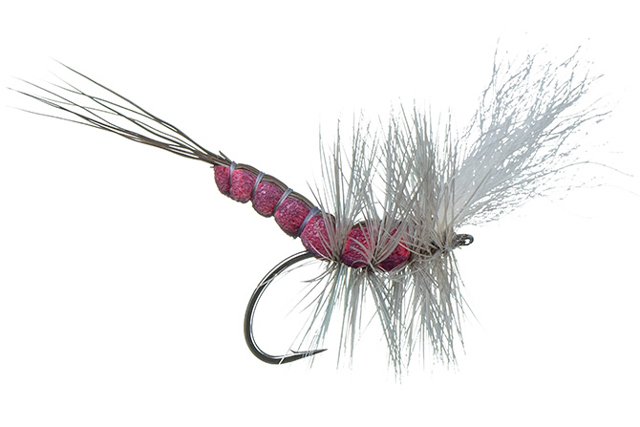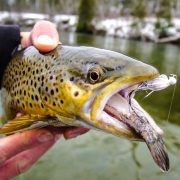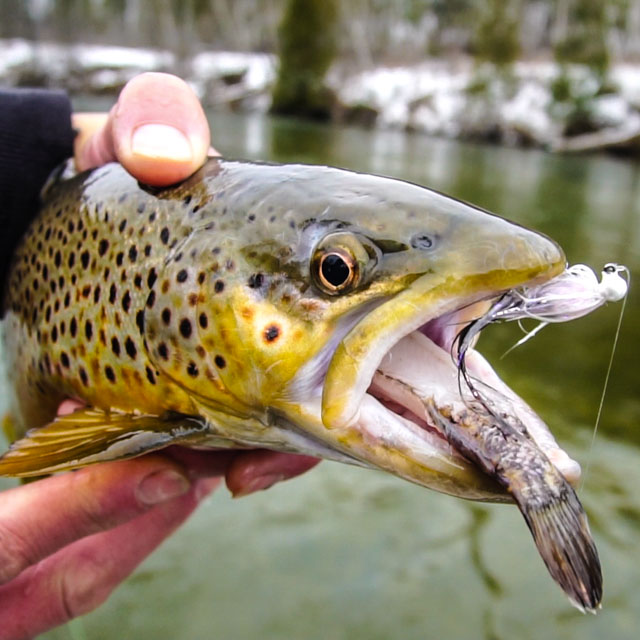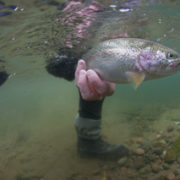Top Dry Fly Hook Choices
Choosing the Correct Hook for Tying Dry Flies
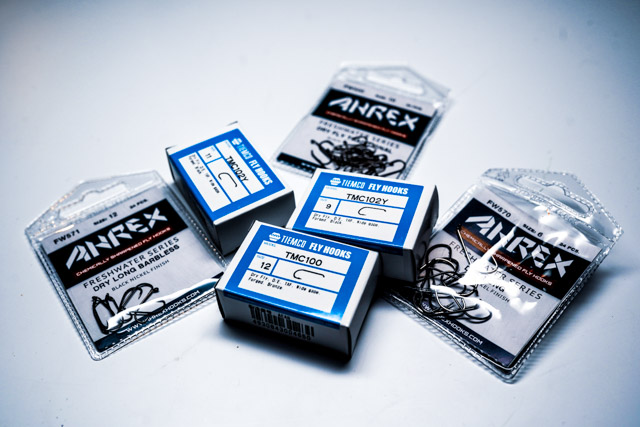
When it comes to tying flies in today’s industry, the hook choices are almost unlimited and in many cases overwhelming. New Branding continues to increase the number of hook choices available in today’s market. However, if you pay close attention to some of the more important variables for good Dry Fly Hook choices you can eliminate most of the confusion. The purpose of this discussion is to help you think through your choices and to highlight a few of my preferred hook choices for tying Dry Flies. You can also check out the video where we covered some of our favorite hook choices on the Mangled Fly You Tube Channel.
Key Characteristics to look for in Hook Choices
Some important hook characteristics to consider in selecting an appropriate dry fly hook would be; hook eye orientation, hook gap, hook wire diameter/length, hook bend shape/point. Hook strength and hook up efficiency are very important aspects of hook choice and are directly related to the primary characteristics of the hook. The orientation of the hook eye, the length of the hook shank, and the width of the hook gap are all important components of hook design. that dictate your success. Finally a good range of hook sizes is also important in determining hook choice. If more hook sizes are available for a particular hook then you will have more variety of sizes to tailor your fly selection needs.
I prefer a down turned eye on my Dry Fly hooks. The biggest reason for this relates back to the hook setting angle of a Dry Fly presentation which is typically straight up. A down turned eye offers exceptional hook up efficiency with this type of hook set. For comparison a straight eye hook offers greater hooking efficiency with a strip set. Understanding presentation and how the hook will respond to the typical presentation you will be fishing with will determine how efficient your hook up percentage will be.
Whenever possible I will choose a wide gap hook for most of my Dry Fly hook selections as well. A bigger hook gap will tend to give you a better hookup percentage and more room for error while fighting hooked fish. Consider the style of fly you are tying as well. If you are tying extended body or foam patterns I prefer the wide gap hooks. Wide gap hooks have more of the hook point exposed and provide a bigger area for hook penetration. Most of the hooks I tie on are also chemically sharpened, this seems to be an industry standard, but hook penetration is very important.
The hook wire strength/length are important considerations too. Some of the larger insects we imitate require longer hooks to complete the platform for that bug. Longer wire hooks tend to give the fish an advantage for escape. Matching the length of the wire to strength, 2x or 3x heavy, and a wide gap would be my preferred choice. I don’t tie Dry Flies on a lot of long shank hooks basically for that reason. However, with that being said there are a few hooks available in this size combination that I have had great success with and I tend to use these hooks while tying my larger Dry Flies. Hoppers, Hex, and larger Stonefly patterns sometimes require that longer hook shank to get the appropriate size in your imitation. The TMC 5263 and Ahrex FW 570 are two of the long shank dry fly hooks I like for these larger bodied imitations.
Some of my Favorite Dry Fly Hook Choices
Here is the short list for the most commonly used Dry Fly Hooks that I prefer to tie my Dry Flies on. Feel free to substitute your own selections, these are just the hooks that I have the most confidence in for their performance on the water. You can check out the specs on the full Line of Tiemco Dry Fly Hooks
Tiemco TMC 100
The TMC 100 is the most commonly used hook for my Dry Fly tying. It is a standard Dry Fly hook that has a downturned eye, 1x fine wire, and a wide gap. This hook is available in a multitude of sizes from #8 to #26. I have used this hook in a number of flies and personally have a lot of confidence in this hook. The TMC 100 allows me to imitate countless hatch specific insects. I use this Dry Fly hook for most of my Parachute Mayfly imitations, Mayfly spinners, Mayfly/Caddis emergers, and Stonefly/Caddis adults.
Tiemco TMC 102Y
The TMC 102Y is a unique hook that has an unbelievable hook up efficiency! It was designed for fishing in Japan for quick striking trout. The TMC 102Y is a Dry Fly hook with a downturned eye, 1x fine wire, and a wide gap. This hook is available in sizes #9 to #19. The odd sizes are intriguing, but we do have some hatches here in Michigan where the insects are actually smaller than the even sizes commonly found in most standard Dry Fly hooks. The male Hendrickson Mayfly is one example that comes to mind. I have used this hook in Parachute Mayfly, Mayfly emerger, Stonefly, and Hopper imitations. It really shines as a great hook to use in a lot of my Mayfly extended body patterns, especially the All Day Dun series. This hook has quickly become one of my favorites for the majority of my Dry Fly tying.
Tiemco 5263
The TMC 5263 has a downturned eye, 3x long shank, and a 2x heavy wire. This hook is actually a Nymph and Streamer hook, but I will commonly use it in some of my larger Dry Fly patterns. I prefer to use this hook in some of my Hex, Hopper, and Stonefly patterns where I have a greater chance of encountering larger fish. This hook has a good hookup percentage and is tough as nails. I have not had one fail or bend while playing larger fish. Confidence is the name of the game with this particular hook. This is one of the long shank hooks that has a good balance of length to strength and hook gap width. This is important when it comes to hookup efficiency and battling larger fish.
Ahrex FW 570
The FW 570 is a 2x long Dry Fly hook with beefed up wire and a large gap making it a great hook choice for big fish flies. This hook is available in sizes #4 to #14 and the smaller sizes are still beefy enough to manage larger fish easily. I haven’t been using this hook as long as some, but so far it has been a great hook for some of my larger foam extended body mayfly and hopper patterns. It’s quickly finding its way into more of my tying and my confidence in this hook continues to grow. This is another great long shanked hook that has a great hookup efficiency.
Gamakatsu B10S
The B10S is a 1x strong Stinger hook that can be found in sizes #5/0 to #14. I have successfully used this hook in the smaller sizes from #6 to #14 in some of my Dry Fly patterns. It is a great hook for some of my larger foam extended body Mayfly and Stonefly patterns. It is very strong and has a pretty good hookup percentage. It has a wide gap which is great for extended body Dry Fly patterns. It meets a niche I needed to fill with a short shank hook paired with a wide gap.
Hook selection is a very important component to fly design. As you start to play with new materials and develop some pretty unique and effective fly designs, make sure you pay close attention to the hook selection. A fly is only as good as the hook it is tied upon! If you are struggling to hook fish with a certain pattern consider the hook choices available when you go back to the drawing board. Trial and error are all part of the game. Don’t be afraid to experiment with different hook types to find one that works better with a specific fly design.
